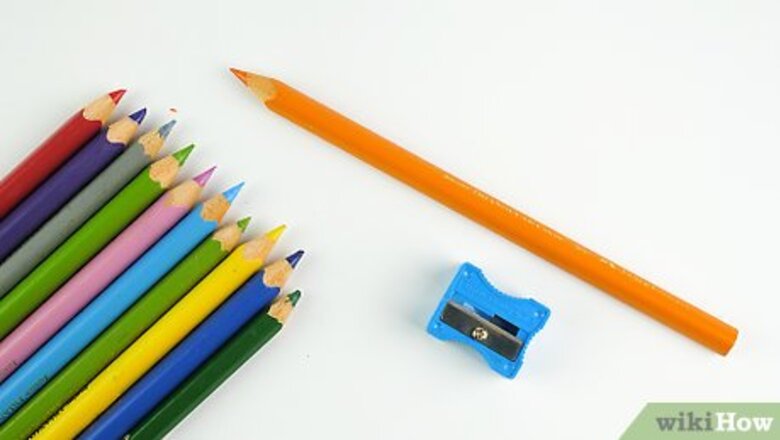
views
- Hold your pencil sideways so the largest part of the tip touches the paper. This position allows you to layer the color until you reach your desired shade.
- Apply pressure on the tip of your pencil to make fine details, outline parts of your drawing, or shade in dark colors.
- Blot the color away with an eraser to lighten pencil marks and create a smooth finish.
Creating Light and Dark Shades
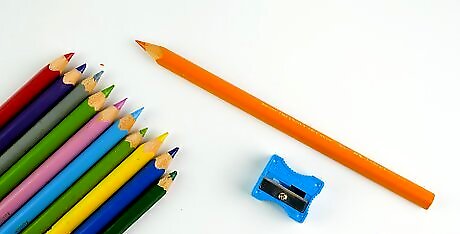
Sharpen your colored pencils before using them for the best color. A sharp colored pencil will allow you to make finer lines as well as more vibrant colors. Sharpen all of your colored pencils using a pencil sharpener each time you go to use them, creating a fine point.
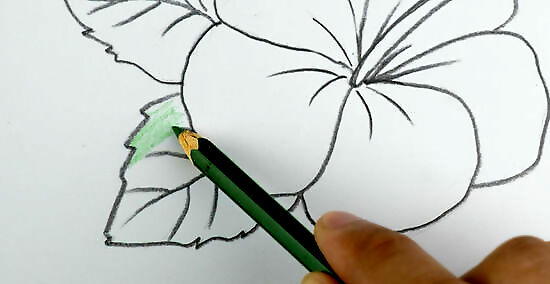
Use controlled, slow movements to create the best drawing. Instead of rushing through your drawing and quickly applying the color, slow down and make your lines more precise. When you color quickly, you’re more likely to press too hard and create messy lines. Professional artist Rebecca Schweiger suggests "varying the pressure of each pencil, so you can see how light and dark you can get your colors." Holding your pencil at an angle helps to control your arm movements and slow down a bit.
Hold your pencil on its side to shade a larger area in lighter shades. By using your colored pencil’s side, the color will be slightly lighter and the strokes will be broader. This is helpful for layering or if you’re trying to cover a large area in a faster amount of time. The lighter you press on the paper with the colored pencil, the lighter the color you’ll create. Holding your pencil farther back, as opposed to right next to the tip, will help you keep your shading light because you won’t be applying as much pressure.
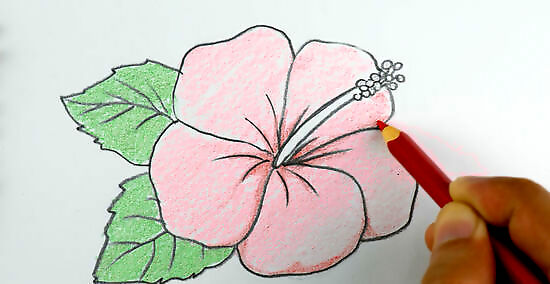
Use the tip of your pencil and apply pressure for darker shades. The tip of your colored pencil is great for making precise, skinny lines. If you’re using the tip and pressing down, know that your color is going to come out more concentrated, so you’ll want to be very sure about your marks before you make them. Use the tip of your colored pencil to create fine details or outline parts of drawings. Keep sharpening your pencil when it becomes dull so the tip remains sharp.
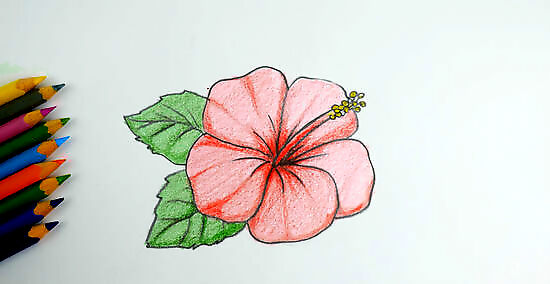
Layer your color slowly as opposed to immediately applying pressure. According to professional artist Rebecca Schweiger, "Layering is the best way to properly blend colored pencils." Even if you’re only using one color, apply a layer of light color by holding your pencil softly, and then keep adding light layers on top of that one until you reach your desired shade. Schweiger advises "applying a little extra pressure to the color that you want to shine through more." If you were drawing a red apple, Schweiger suggests "layering some blue on top to create colored shadows." Avoid immediately using pressure to create bright colors. This makes it very hard to add other colors on top of it, and it makes your shading look uneven. Really allow yourself to mix the colors so that you can see how light and how dark you can get your colors!
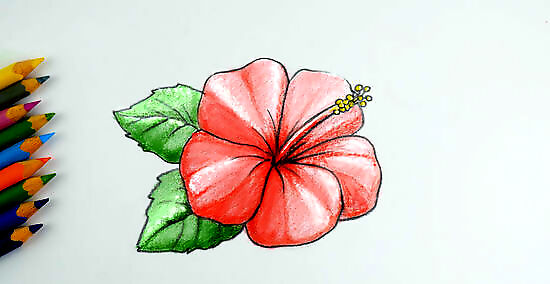
Blot the color away with an eraser to lighten the pencil marks. Instead of rubbing the eraser on the colored pencil marks to try to remove the color, try lightly blotting at the marks with an eraser instead. If you rub your paper with the eraser, it’s just going smear the color and ruin your picture. While it's unlikely that you'll completely erase the colored pencil marks, blotting at them with an eraser may lighten them significantly. Try purchasing colored pencils that are specifically designed to erase and come with their own special erasers if desired.
Using Different Shading Techniques
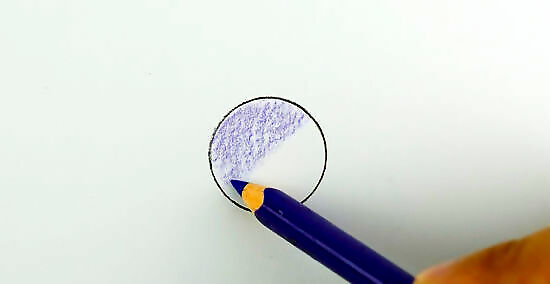
Color using back-and-forth strokes. This is the most common way to use colored pencils, and you probably do it naturally when shading. Color in your drawing using a back-and-forth motion while not lifting your pencil from the paper. This is a good way to fill in areas with color very quickly.
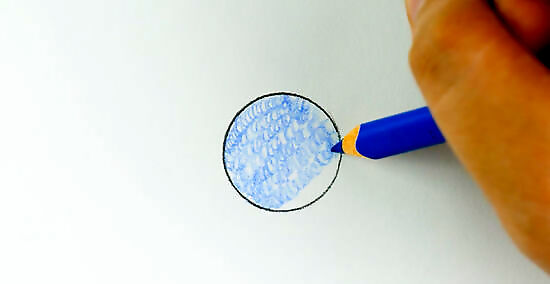
Draw using circular marks to create texture. Instead of using continuous lines going back and forth, create circles instead. Put your colored pencil to the paper and start creating small, light circles going on top of one another without lifting your pencil from the paper. The more circular marks you layer on top of one another, the more vibrant the color you’ll create. Another name for this method is scumbling. Use this method to color in a flower or large object that's all the same color.
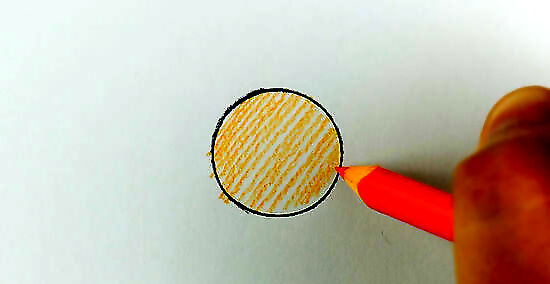
Create hatch marks for a uniform color drawing. Hatching is when you draw small parallel lines next to one another all going in the same direction. Create your hatch marks as close or far apart from one another as you’d like. The closer together you make your marks, the more colorful your drawing will seem. You might use hatch marks to show the shading and shadows of a hand or a pillow.
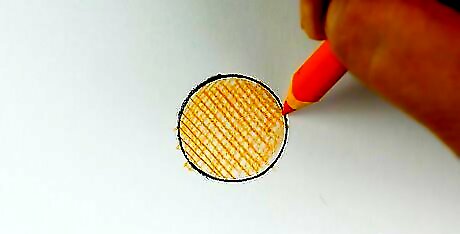
Try crosshatching to form vibrant tones in your drawing. To crosshatch, create hatch marks by forming parallel lines next to one another, and then create another set of parallel lines going the opposite way. This creates a bunch of ‘X’ marks right beside one another. This is a great way to shade in your drawing to give it a uniform look. Crosshatching is useful if you’re blending two colors together—you can use one color for one set of parallel lines, and the other color for the other set of parallel lines going the opposite direction. Use crosshatching to shade in a picture of a barn or a piece of fruit.
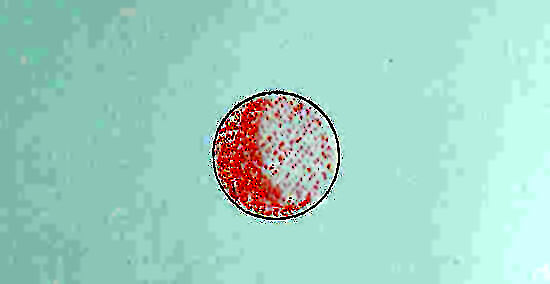
Use the stippling technique to create texture using dots. Stippling is when you use your colored pencil to make dots all over the paper. The dots can be close together or far apart, but the closer together and the more there are, the more colorful and vibrant your drawing will be. Stippling adds great texture to your drawing. Make the dots as thin or thick as you’d like, experimenting with different versions until you find one you like the best. You could use the stippling technique to draw a seashell or a wave in the ocean.
Shade using burnishing for a very smooth look. Burnishing is adding layer after layer of color on top of one another until there’s so much colored pencil that it creates a glazed, smooth surface. As you keep adding layers, you’ll need to press harder for the colored pencil to show up, which is what creates the shiny quality. Burnishing can take a long time due to the number of layers you’ll need to add on top of one another to create a smooth look. Try drawing the sunset or a vegetable using the burnishing method. Blend your coloring using a blender or paper stump to make the process go faster. You can also use your fingertips to blend the colors.
















Comments
0 comment